Research Cell
Mechanical and Electronics Related Information and DIY Projects
XL4016E1 is a popular DC-to-DC step-down converter. The reason why it is so popular is because it is very easy to use and readily available that too at a very low price. XL4016E1 is not a standalone voltage regulator, therefore we need some basic components to drive it and get the regulated output we need. The good thing is, that it is already available as a complete buck converter module in almost all online markets such as Aliexpress and Amazon.
In this article, I will cover everything about XL4016E1 and its buck converter module. After reading this article, you will be able to use it with full confidence.
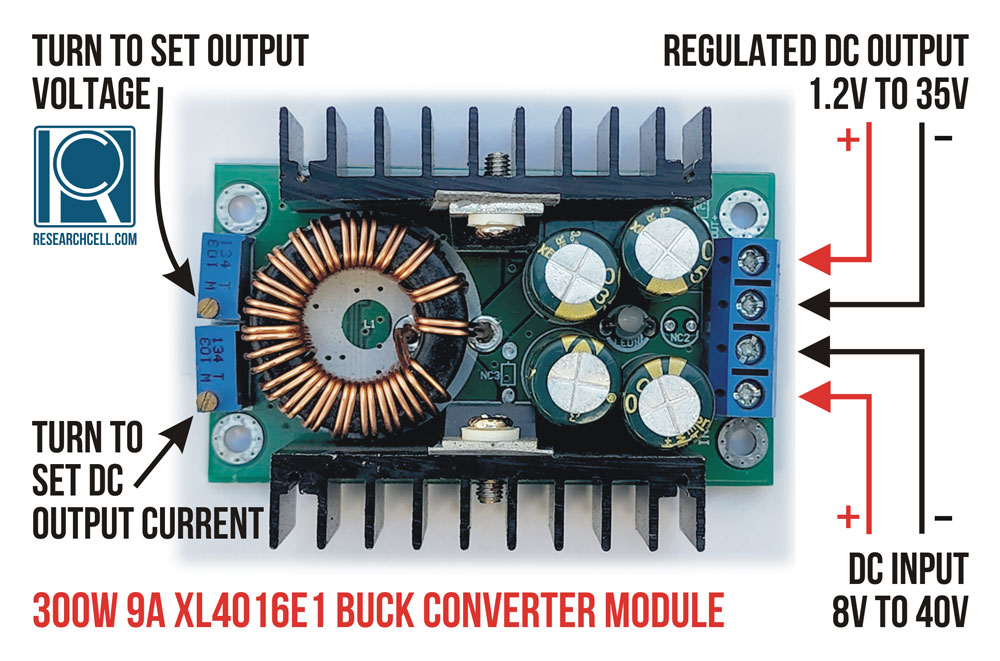
XL4016 buck converter module is very easy to use. There are four connectors present on the board; Through them, we can give it DC input and get regulated DC output from it. I have attached a picture in this article where I have identified these connections. I have also indicated which potentiometer is for setting volts and which potentiometer can be used to set amperes.
Note: The current limitation feature does not work properly below 2V. Therefore, don’t set the output voltage below 2V.
In the table below you can see the technical features of XL4016E1 IC.
| Feature | Value |
| Minimum Input Voltage | 8V |
| Maximum Input Voltage | 40V (Better Stay below 30V) |
| Maximum Continuous Output Current | 8A |
| Minimum Output Voltage | 1.25V (1.75V for Buck Converter Modules) |
| Maximum Output Voltage | 35V (Better Stay below 28V) |
| Switching Frequency | 180KHz |
| Efficiency Claimed | Up to 96% |
| Ripple | Less than 100mV (0.1V) |
| Line Regulation (Output changes with Input variation) | 2% |
| Load Regulation (Output changes with varying load current) | 0.5% |
| Short Circuit Protection | Yes (Shutdown) |
| Overcurrent Protection | Yes (Shutdown) |
| Thermal Protection | Yes (Shutdown) |
| Minimum Operating Temperature | -40C |
| Maximum Operating Temperature | 85C |
To calculate its efficiency, we tested XL4016 with different input voltages and varying load currents. You can see our findings below. Looking at its efficiency, I see it as a potential candidate to be used as MPPT for small solar applications below 40V.
| Input Volts and Output Load | Calculated Efficiency |
| Efficiency Tested (8V to 5V @2A load) | 93% |
| Efficiency Tested (12V to 5V @2A load) | 91% |
| Efficiency Tested (24V to 5V @2A load) | 86% |
| Efficiency Tested (36V to 5V @2A load) | 83% |
| Efficiency Tested (8V to 5V @8A load) | 85% |
| Efficiency Tested (12V to 5V @8A load) | 84% |
| Efficiency Tested (24V to 5V @8A load) | 83% |
| Efficiency Tested (36V to 5V @8A load) | 81% |
There are many step-down buck converter modules available in the market that are based on XL4016E1, I am going to cover the most popular module here which is called the 300W XL4016 DC-DC Step Down Buck Converter. I have also added a photo that shows both sides of this module. The reason why I like this specific module is because in this type of module, the heatsink plates are attached on the sides which enables us to replace the stock heatsink plate with their larger counterparts in case we want to take continuous power out of XL4016.
This 300W XL4016E1 module weighs 67.2 grams, including the heatsink plates. The length is 2.55 inches or 6.5cm and it is 1.88 inches or 4.8cm wide if measured from outside the heatsink plates. The thickness or height of this module is around 0.94 inches or 2.4cm.
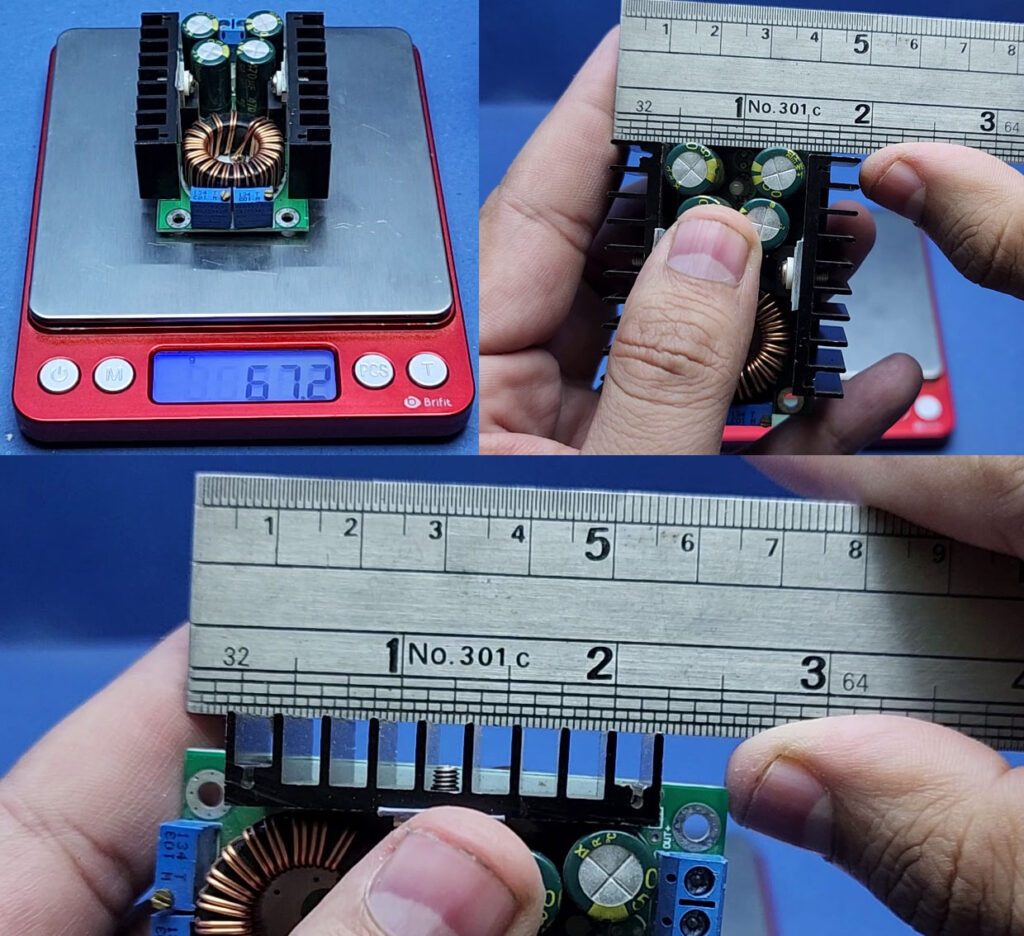
The above information can be used to 3D print a case for the 300W XL4016E1 module, but you should also consider heat dissipation when calculating the required space. The heatsink plates, especially one attached to the XL4016E1, can reach 85C so PLA cases can get soft or even deform. ABS filament is a better choice to print it.
As far as the usage of this module is concerned, we can use it as a cheap alternative to a current limiting variable power supply. Just remove the existing small pots on the board and replace them with knob-type pots using long wires to set the voltage and current from outside the power supply box. Apart from this, if you also install a volt and ampere meter on the output side of your Xl4016 module, your power supply will be complete.
However, the output of XL4016E1 has a ripple of around 100mV which is not a big issue for most hobby-level applications but you will need a professional power supply for sensitive devices and circuits such as radio receivers, transmitters, etc.
XL4016E1 buck modules can be used as a cheaper alternative to the expensive MPPT modules for small solar arrays. However, the maximum open circuit voltage needs to be limited to 40V maximum, otherwise, the XL4016E1 itself or the onboard 78L05 voltage regulator can burn. I have specifically mentioned it because sometimes people don’t take the open circuit volts into account and only measure under-load volts. In the case of XL4016, even 40V is the absolute upper limit of this module. Even 1V above this limit can burn the module, I recommend you to stay a little below 40V to keep it safe.
XL4016E1 buck converter can be used as a battery charger circuit. It can be used for both lead acid and lithium batteries. We just need to carefully set the output voltage and then limit the current to a safe level. XL4016E1 even has an onboard LED that changes the color once the current drawn gets a bit below 1A which can be used as a charging indicator.
XL4016E1 module can be used as a charger for electronic devices such as laptops, cameras, scanners etc. It has the capacity to deliver enough power for most of the devices in a household. The ability to change the output voltage makes it perfect to suit almost any device. I have tried to use it as a charger for my laptop, despite of seeing a warning of the original charger on startup, everything else works great.
We can also use XL4016E1 as an LED driver. The LEDs are in fact diodes operating at a certain voltage therefore they try to pull as much current for the power supply as possible once the voltage exceeds their forward volts limit. This makes XL4016E an ideal power source for them. Due to the ability to limit the current, we can increase the lifespan of our LED lights. As a bonus, we can also control the light intensity by using the onboard voltage adjustment potentiometer.
I find XL4016E1 an ideal power supply to charge my supercapacitors array. A few days ago, I had to do some spot welding. I connected four supercapacitors in parallel and then attached an XL4016 with them to charge them. This little setup performed really well, the 8A output from XL4016E1 was enough to quickly charge my supercapacitors array after every spot weld and the 2.7V limit kept my supercapacitors safe from overcharging.
XL4016E1 is an extremely durable IC. You won’t be able to burn it unless you do something extremely wrong such as polarity reversal or giving it voltage about the limit. I made a vigorous stress testing video of this module and I was not expecting it to survive my video but to my surprise, my module made it.
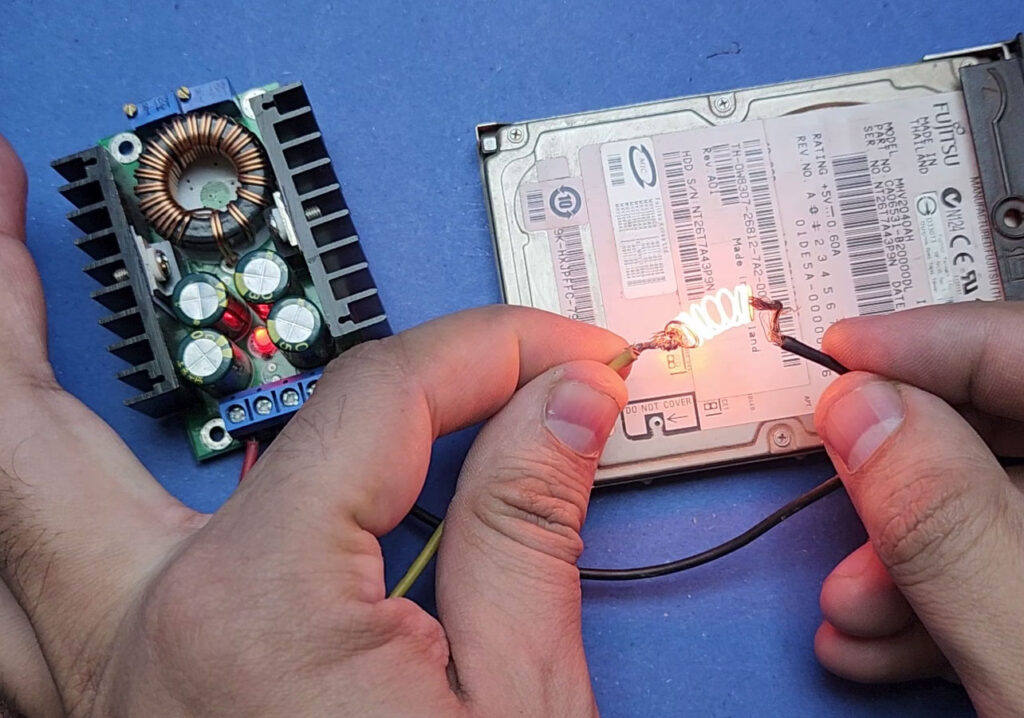
I connected a thin steel spring on the output side of the XL4016E1 module and used a 30V and 10A power supply as input source. I then adjusted the output current to the max. the steel spring fully melted but the module didn’t not burn. I then melted another similar steel spring and it still survived. The heatsink plate only reached a little above 60C while doing so.
I am about to mention a common misconception about this 300W XL4016E1 module here. Due to the presence of two identical heatsink plates, some people assume that there are two XL4016 ICs present on the 300W module while in reality, there is only one XL4016E1 IC in the module, the second heatsink plate is attached to HBR2045 which is a Schottky diode. This heatsink does not get very hot and may not need external cooling. If you want to add a fan then the airflow should be towards the heatsink plate attached to the XL4016E1.
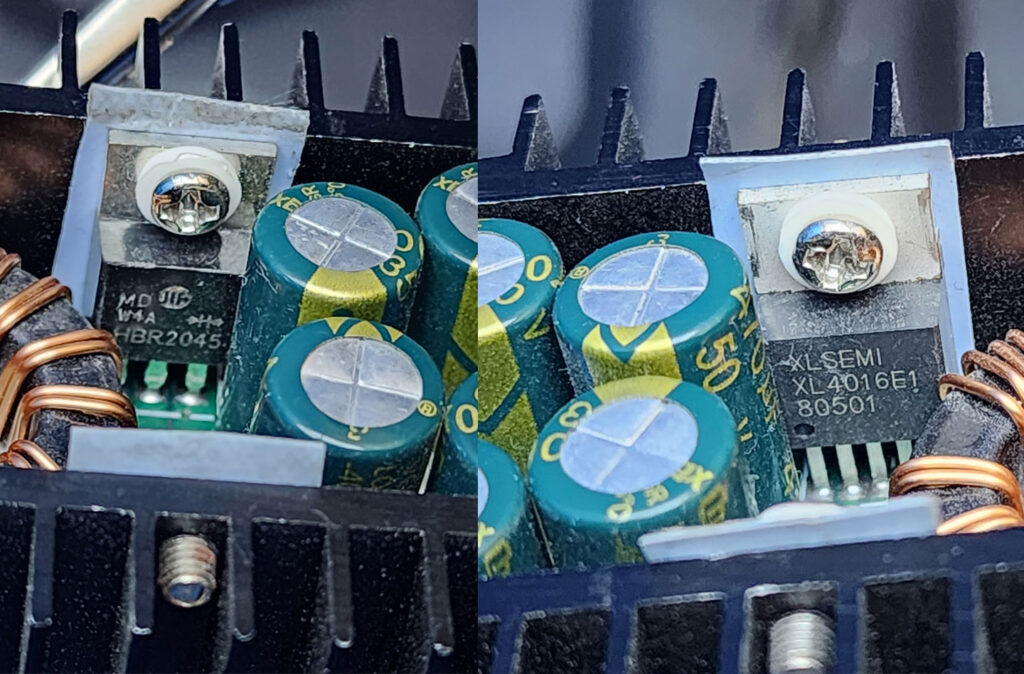
The biggest drawback I faced with XL4016 modules was the ripple on the output side. I tried to smoothen the output by adding different types of capacitors to the output but couldn’t get rid of the ripple. I even tried some large capacitors coupled with small 104 capacitors but still, it only marginally improved the output. I think the only solution is to use a linear voltage regulator such as LM317 or 78xx series on the output to remove the ripple.
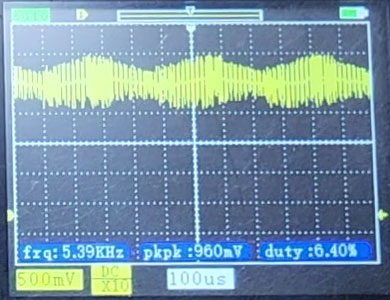
I have noticed that the onboard inductor operating at 180KHz generates a strong magnetic field which can affect the nearby electric devices by introducing voltage inside their internal wiring. This can be an issue if you have to fit the module near some sensitive device.
Most of the XL4016E1 buck converter manufacturers claim that the input range of their module is 8V to 40V. I really doubt this due to the presence of lm78L05 and LM358 on the module. LM358 is a 30V operational amplifier while LM78L05 is also rated to work at 30V or below. Now, I don’t claim that these components can never work at 40V but what I am trying to say is, if you are planning to give your XL4016 module 40V as input then you are really pushing it to the limits. I recommend you to stay around 30V or below to maximize its life.
Here is the most complete video review of XL4016E1 buck converter you can find online. It covers everything you need to know before using it!